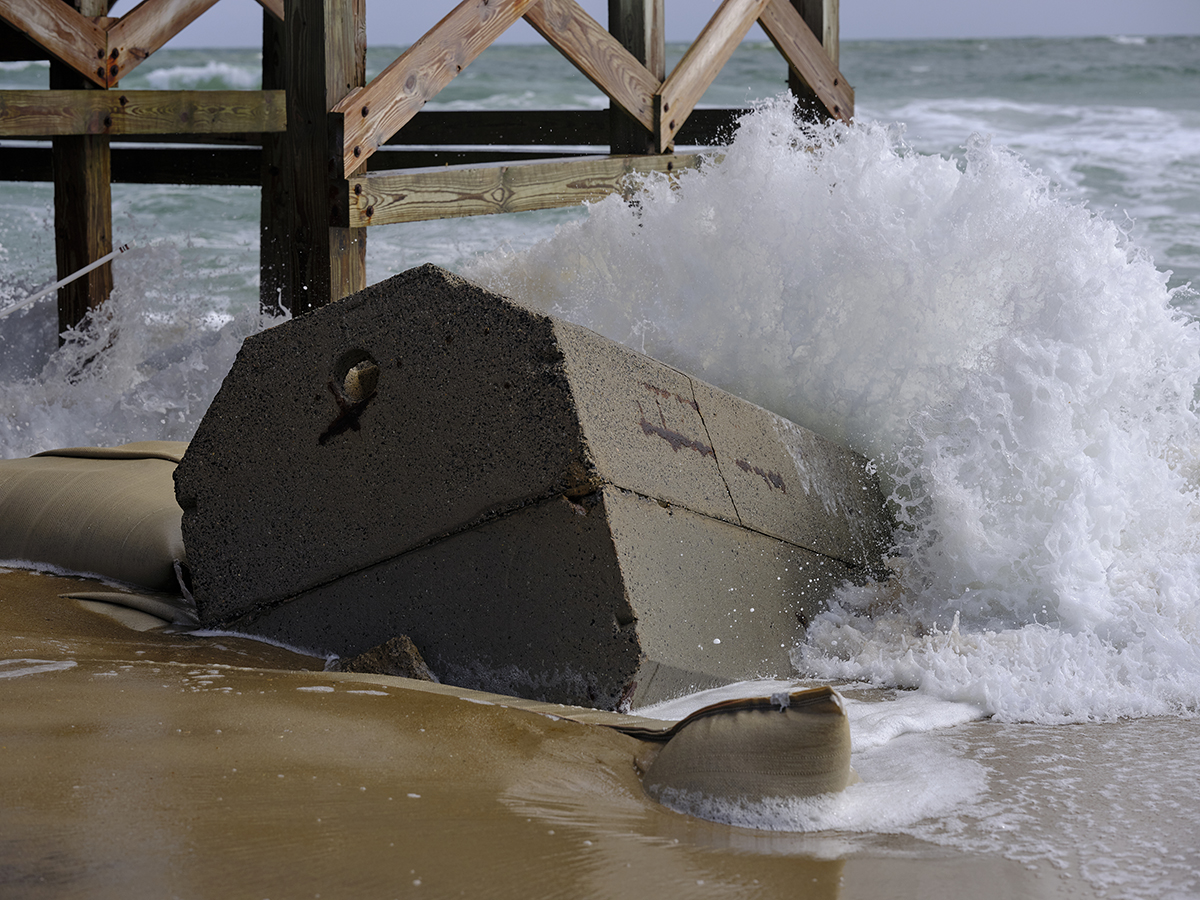
WILMINGTON – State rules on where septic tanks can be located on oceanfront properties are likely to change in the coming months.
The North Carolina Coastal Resources Commission Thursday gave the green light to Division of Coastal Management Director Braxton Davis to move ahead with proposed changes to existing rules, including setbacks and permit requirements.
Supporter Spotlight
Davis indicated those recommendations will include clarifying that an oceanfront property owner must obtain a permit in order to place a septic tank displaced by a storm or tide event back in its original location.
The proposed amendments would prohibit septic tanks from being placed seaward of the first line of oceanfront vegetation.
Davis will present recommended changes at the commission’s November meeting.
Discussions have been taking place for months as to how federal, state and local governments can address a problem coastal experts say is only going to get worse with rising seas and climate change.
In February, encroaching waves toppled three oceanfront homes in Rodanthe, leaving debris strewn for miles along the Cape Hatteras National Seashore.
Supporter Spotlight
“Even when houses don’t collapse they are constantly shedding debris due to the wrath of high tides and the ocean,” Cape Hatteras National Seashore Superintendent Dave Hallac said at the commission’s quarterly meeting Thursday in Wilmington.
As he spoke, he scrolled through pictures on a large projector capturing the aftermath of the homes that collapsed in early February, a time in which there were no coastal storms.
The destruction left a debris field stretching about 15 miles on the national seashore, where everything from fiberglass shards, tens of thousands of roofing tiles, drywall, carpet and other construction materials littered the beach.
“Even the kitchen sink, which is meant to be a bit of a joke, but it’s not,” Hallac said, referencing a photograph of a sink on the sand.
Though property owners paid for a contractor to clean the debris, the park has had to dig into its coffers to pay for cleanup. The park purchased a $40,000 beach rake, which is being used this week to pull materials off the beach.
The debris has affected access to the national shore. People have been injured by stepping on boards and nails. Surfers and swimmers have been hit by debris floating in the Atlantic Ocean.
More than 3 million people visited the Cape Hatteras National Seashore last year, the highest number on record, Hallac said. Nearly 160,000 people used the parks’ overnight campgrounds and 55,000 beach driving permits were issued.
Along with the problem of debris left behind from collapsed homes are septic tanks that have been exposed and relocated by waves.
Hallac shared with the commission that during an interview with a New York Times reporter following the collapse of a Buxton home in May, an exposed septic tank broke open.
“We actually had to leave the area because the smell was so bad,” he said.
Though Hurricane Earl was 830 miles off Rodanthe’s coast last weekend, churning waves exposed a newly installed septic system, which broke open and discharged raw, untreated sewage on the beach throughout the night.
“This is not an uncommon event and it does not take a significant storm to cause these problems,” Hallac said. “This is a problem that is likely to become more significant. We are dealing with significant issues from sea level rise.”
A 1986 survey found that more than 700 oceanfront structures in the state at that time faced short-term erosion risk, Davis said.
While many of those homes are gone, the numbers are about the same today.
Davis said that North Carolina has some of the strongest oceanfront setbacks in the country. Coastal rules dictate that the bigger the structure, the farther away from the ocean it must be built.
“Even with really strong oceanfront setbacks we’re going to end up over time with houses on the beach,” he said.
Permits issued by the division or local governments must include a condition that a private home be moved within two years after it becomes imminently threatened.
That rule has not been enforced, Davis said, because natural beach recovery, beach renourishment, or permitted temporary sandbag structures typically occur within that time period.
Davis said the rule lacks clarity and is challenging to implement because of frequent changes in property ownership and worries about litigation.
The sea level is predicted to rise between 10 to 14 inches by 2050. Moderate flooding events are expected to increase tenfold by that time.
Hallac said some progress is being made as officials work with the owners of 24 homes in Rodanthe. Four homes had been relocated — the latest moved Wednesday — and permitting was underway to move another two.
Local, state and federal officials have been working together to get homes threatened by the ocean moved before they crumble into the sea.
The Division of Coastal Management, National Park Service and Dare County officials recently formed an interagency group to determine the authority of federal and state agencies to take protective actions on their jurisdictional shoreline.
The working group is to lay out a variety of immediate and long-term solutions to solving the problems facing some oceanfront properties and the communities they’re in.
“We need partners in thinking it through,” Davis said. “We’re talking about something that’s not going away. Coastwide, we’re going to see it.”
The group is discussing ways to educate homeowners, looking at the inventory of parcels that may be available for relocated homes, real estate disclosure requirements and the liability of property owners.
“It’s a situation from which I see no escape,” Commission Chair Renee Cahoon said.








